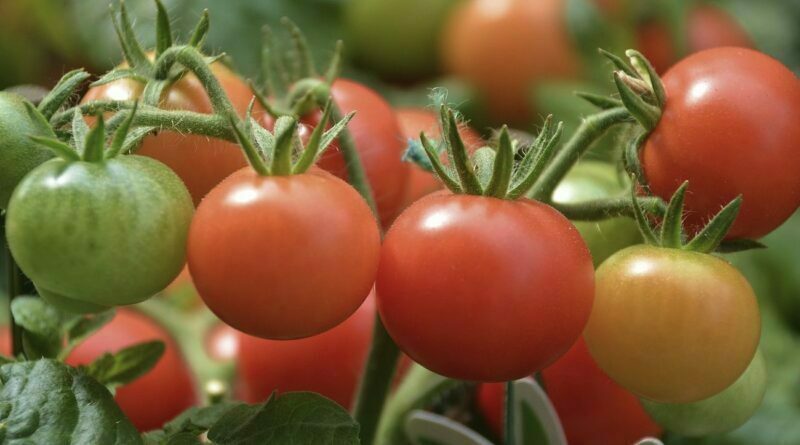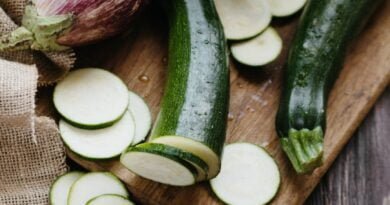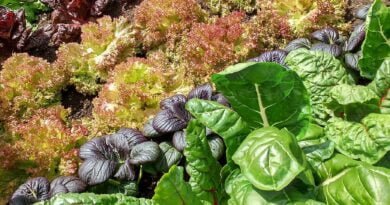Growing and Savoring Fresh Tomatoes – Insights, Health Advantages, and Recipe Ideas
Tomatoes, technically classified as fruits but commonly referred to as vegetables, undoubtedly hold a place of honour among the most beloved crops grown in allotments and home gardens. Their widespread popularity is largely attributed to their relative ease of cultivation and the promise of a bountiful harvest, rendering them an attractive choice for individuals with varying degrees of gardening expertise. Whether you’re just starting out in the world of allotment gardening or boast years of experience nurturing various plants, tomatoes are a staple that can be both a satisfying challenge and a rewarding addition to your garden.
Within the confines of this comprehensive guide, we aim to unravel the rich tapestry of tomato cultivation. We’ll embark on a journey that encompasses all aspects of growing tomatoes, right from the initial planting stage to the eagerly awaited moment of harvest. The detailed insights provided here will equip you with a wealth of knowledge to ensure the thriving growth of your tomato plants, whether you opt for the familiar classics or the more exotic heirloom varieties.
The significance of tomatoes goes beyond the garden; they offer a wide array of health benefits that make them even more appealing. We’ll delve into the nutritional advantages of this vibrant fruit, exploring the vitamins, antioxidants, and other compounds that contribute to a healthier you.
Beyond their nutritional prowess, tomatoes are versatile in the kitchen, capable of transforming the most ordinary of dishes into culinary masterpieces. To whet your appetite for the delectable possibilities, we’ll present an assortment of tantalising meal ideas, incorporating fresh, homegrown tomatoes as the star ingredient. From mouthwatering salads and savoury sauces to hearty stews and flavourful salsas, you’ll discover a treasure trove of recipes that not only capture the essence of tomatoes but also elevate your dining experience to new heights.
This guide isn’t merely about growing tomatoes in your allotment; it’s a journey that encompasses the joys of cultivation, the treasure of nutrition, and the art of culinary creativity. Whether you’re sowing your first tomato seeds or nurturing established plants, whether you’re drawn to the health benefits or the gustatory pleasures of tomatoes, you’ll find something to enrich your allotment gardening adventure and to delight your taste buds. Welcome to the world of tomato cultivation and all the wonders it entails.
1. Selecting Tomato Varieties:
- Consider your climate: Some tomato varieties are better suited for the UK’s climate. Look for determinate or bush varieties for outdoor growing and extend the range for indoor or greenhouse cultivation.
- Choose disease-resistant types: To prevent common tomato diseases like blight, select varieties that are known for their resistance.
- Heirlooms or hybrids: Decide whether you want to grow heirloom or hybrid tomatoes. Heirlooms have unique flavours, while hybrids may offer higher disease resistance.
2. Soil Preparation:
- Tomatoes thrive in well-draining soil with a pH level around 6.5. Test your soil and amend it as necessary.
- Add organic matter like compost to improve soil fertility.
- Ensure good air circulation by spacing plants about 60-90 cm apart.
3. Planting:
- Tomatoes can be started from seeds indoors in late winter or early spring. Transplant seedlings outdoors when all danger of frost has passed.
- For greenhouse or indoor growing, consider using grow bags or large containers.
- Plant each seedling deep, burying them up to the first set of leaves, which encourages a stronger root system.
4. Watering:
- Maintain consistent soil moisture, ensuring it’s neither too wet nor too dry. Water at the base of the plants to prevent fungal diseases.
- Avoid overhead watering to minimize the risk of blight.
5. Fertilising:
- Fertilise with a balanced, slow-release tomato fertiliser or organic alternatives. Feed regularly during the growing season.
6. Pruning and Supporting:
- Remove the lower leaves as the plant grows to improve air circulation and reduce the risk of disease.
- Stake or cage the plants to support their growth, preventing them from bending or breaking under the weight of fruit.
7. Pest and Disease Management:
- Keep an eye out for common tomato pests like aphids, whiteflies, and hornworms. Use natural or organic remedies to control them.
- Prevent diseases like blight by avoiding overhead watering and using disease-resistant tomato varieties.
8. Harvesting:
- Tomatoes are ready to harvest when they have reached their mature colour. Gently twist or cut them from the vine.
- For green tomatoes at the end of the season, consider picking them before the first frost to ripen indoors.

Health Benefits of Tomatoes
In addition to being delicious, tomatoes are also packed with nutrients and health benefits. Here are just a few:
- Rich in antioxidants: Tomatoes are an excellent source of antioxidants, which can help to reduce the risk of chronic diseases like heart disease and cancer.
- High in vitamins and minerals: Tomatoes are rich in vitamins C and K, as well as potassium and folate.
- Good for your skin: The lycopene in tomatoes can help to protect your skin from sun damage and reduce the signs of aging.
- Anti-inflammatory: Tomatoes contain compounds that have anti-inflammatory properties, which can help to reduce inflammation throughout the body.

Meal Ideas
Tomatoes are a versatile ingredient that can be used in a wide variety of dishes. Here are a few meal ideas to get you started:
- Tomato salad: Slice ripe tomatoes and drizzle with olive oil, balsamic vinegar, and a sprinkle of salt and pepper. Top with fresh herbs like basil or parsley for a simple and refreshing summer salad.
- Tomato tart: Layer sliced tomatoes and cheese onto a pastry crust and bake for a savory and satisfying vegetarian meal.
- Tomato sauce: Simmer tomatoes with garlic, onion, and herbs for a homemade tomato sauce that can be used in pasta dishes or as a base for pizza.
- Bruschetta: Top toasted bread with chopped tomatoes, garlic, basil, and a drizzle of balsamic vinegar for a classic Italian appetizer.
- Stuffed tomatoes: Cut the tops off large tomatoes, scoop out the insides, and fill with a mixture of rice, ground meat, or vegetables. Bake until tender for a hearty and filling meal.
Cultivating tomatoes in your allotment unfolds as a truly rewarding and delightful journey, one that promises to grace your summer with the succulent, sun-ripened goodness of homegrown fruits. This quintessential gardening venture offers you a unique opportunity to immerse yourself in the process of nurturing vibrant tomato plants and reaping the delicious rewards they bestow.
With just a modest investment of care and attention, you can embark on this horticultural adventure and revel in a bounteous harvest of tomatoes. These plump, juicy gems are not merely the ingredients for countless culinary creations; they also bring a wealth of health benefits to your table. By taking up the challenge and growing your own tomatoes, you not only savor the exceptional taste of sun-ripened, homegrown produce but also embrace a journey that encapsulates the essence of self-sufficiency and sustainable living.
Why not seize the opportunity to embark on this delightful venture and incorporate the rich, full flavour of your very own tomatoes into your meals? There’s no better way to enjoy the pleasures of fresh, locally sourced, and naturally ripened tomatoes, and to savor the satisfaction that comes from cultivating your own delicious and nutritious fruits. So, whether you’re a seasoned allotment gardener or a novice just dipping your toes into the world of horticulture, it’s high time to give tomato growing a try. The rewards are nothing short of mouthwatering!




